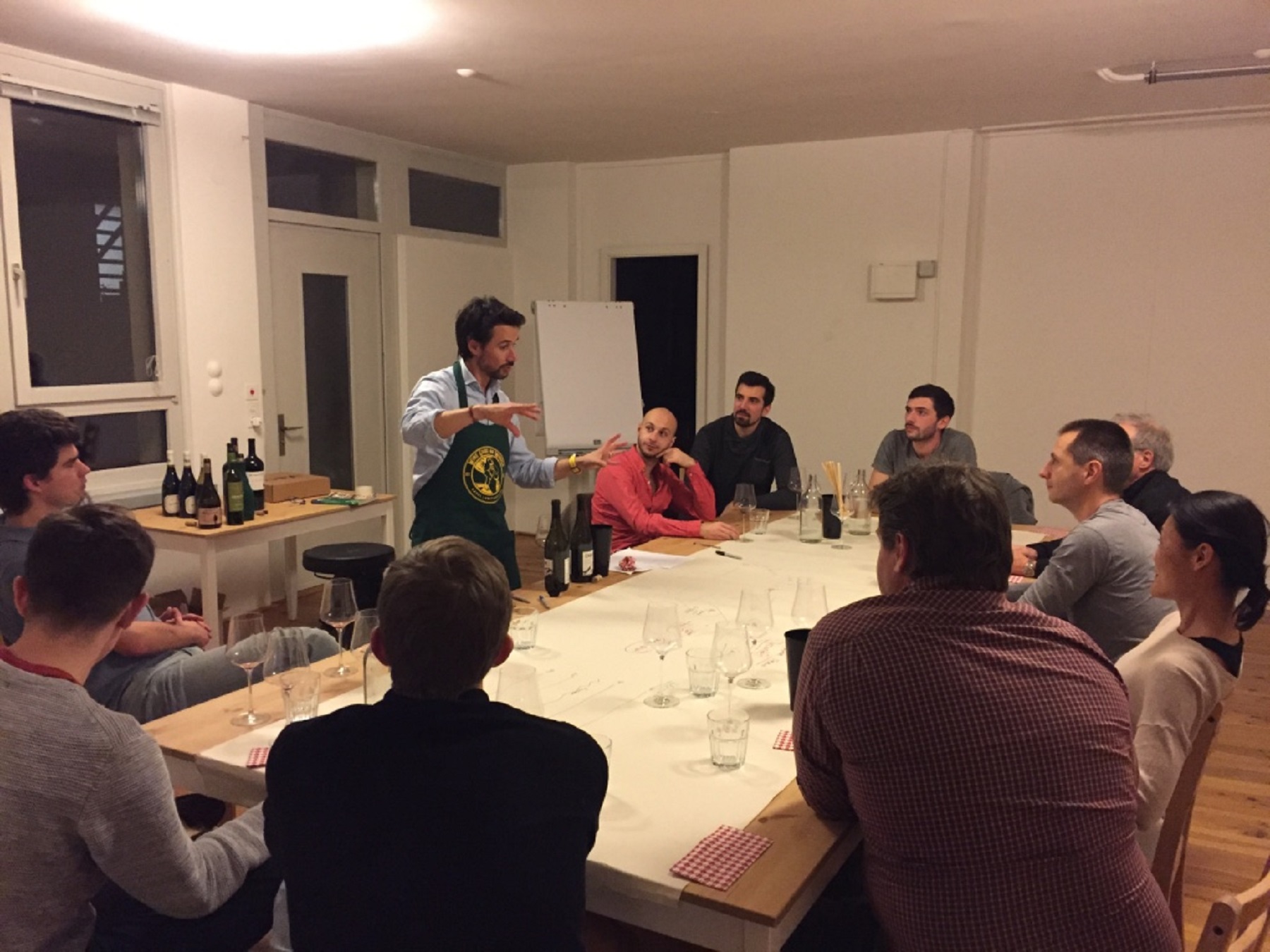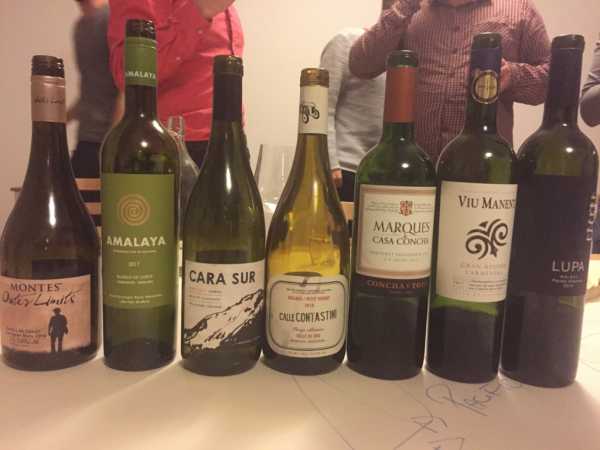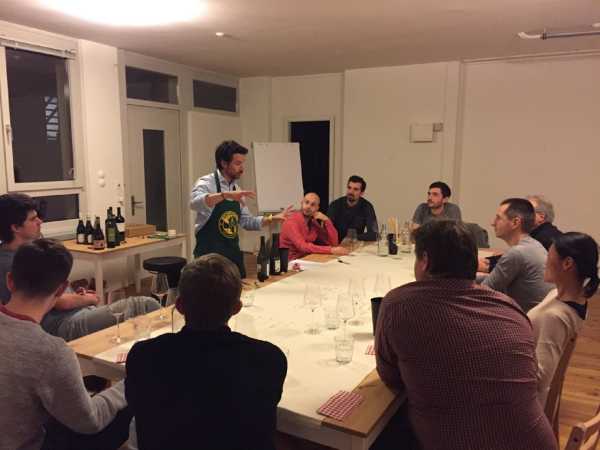Wein-Guru Erfahrung in Basel
Wein Club Alumni
Die letzte Wein-Degustation des ETH Weinclubs im 2019 fand in Basel in Zusammenarbeit mit dem Weinexperten Juan Lo Bello statt. Juan steuerte uns in seiner gemütlichen «Wein-Werkstatt» durch die Nuancen von chilenischem und argentinischem Wein.

Dieser Text wurde nicht ins Deutsche übersetzt.
On Friday 13th of December a group of eleven wine enthusiasts gathered at Juan’s Wein-Werkstatt to combine red and white South American wines with a variety of cheeses. The cozy environment and the experienced knowledge of Juan allowed us to compare the differences in grape varieties and wine-making tradition of these two countries in a relaxed and insightful manner.
White wines kick-off
As attendees were gathering, we started the tasting with the Outer Limits (2016) Chilean Sauvignon blanc from the Montes region. We went on to compare this with an Argentinian wine from the Salta region made of 95 percent of Torrontes grape that grows at 1800 meters above sea level. The cold winds off the Chilean coast and the high Andes altitude of the Argentinian wine provide similar conditions that were responsible for green tastes in both wines despite the differences in grapes.
Core Argentinian red wine
After a short bread and cheese break, we went on to explore the typical Argentinian grape Bonarda, also called Douce Noire, the second most common grape after Malbec. It was extensively planted throughout Argentina due to its high yield, often replacing finer Malbec grapes to cover high demands. Cara Sur (2017) from the Valle de Calingasta was our first attempt with Bonarda and displayed the typical fruity and acid notes of the grape. We went on to try the more classic and exported Malbec grape with a Calle Constantini (2018) from the Valle de Uco that perfectly displayed the characteristic stronger tannins of the variety and came in as less acid than its fellow Bonarda.
Core Chilean red wine
We later crossed the border to Chile in order to compare the wine-making traditions on the other side of the Andes. Here again we compared a widely exported grape namely Cabernet Sauvignon with the more local Carmenere which ranks as third most common grape in Chile. We started by reminding ourselves of the classic Cabernet Sauvignon grape with a Marquez de Concha (2015) from the Concha Y Torro in the Maipo region. It had a taste of berries with a creamy texture amplified by its typical higher alcohol content. It was then compared with the Carmenere grape used in Viu Manent from the Vale de Calchagua where we could also taste strong berry notes leaning toward more acidic red currant. The main difference were typical curry and pepper spices from the variety.
We finished the tasting with a much more refined and exported Argentinian Malbec that displayed strong tannins after spending twenty months in barrique. While this wine-making process makes it more difficult to isolate specific grape tastes, it was the ideal way to finish our Andes wine exploration.
Next events
If you want to be the first to know about the date and the program of upcoming events, send an e-mail to wineclub@alumni.ethz.ch and we will add you to the mailing list.

